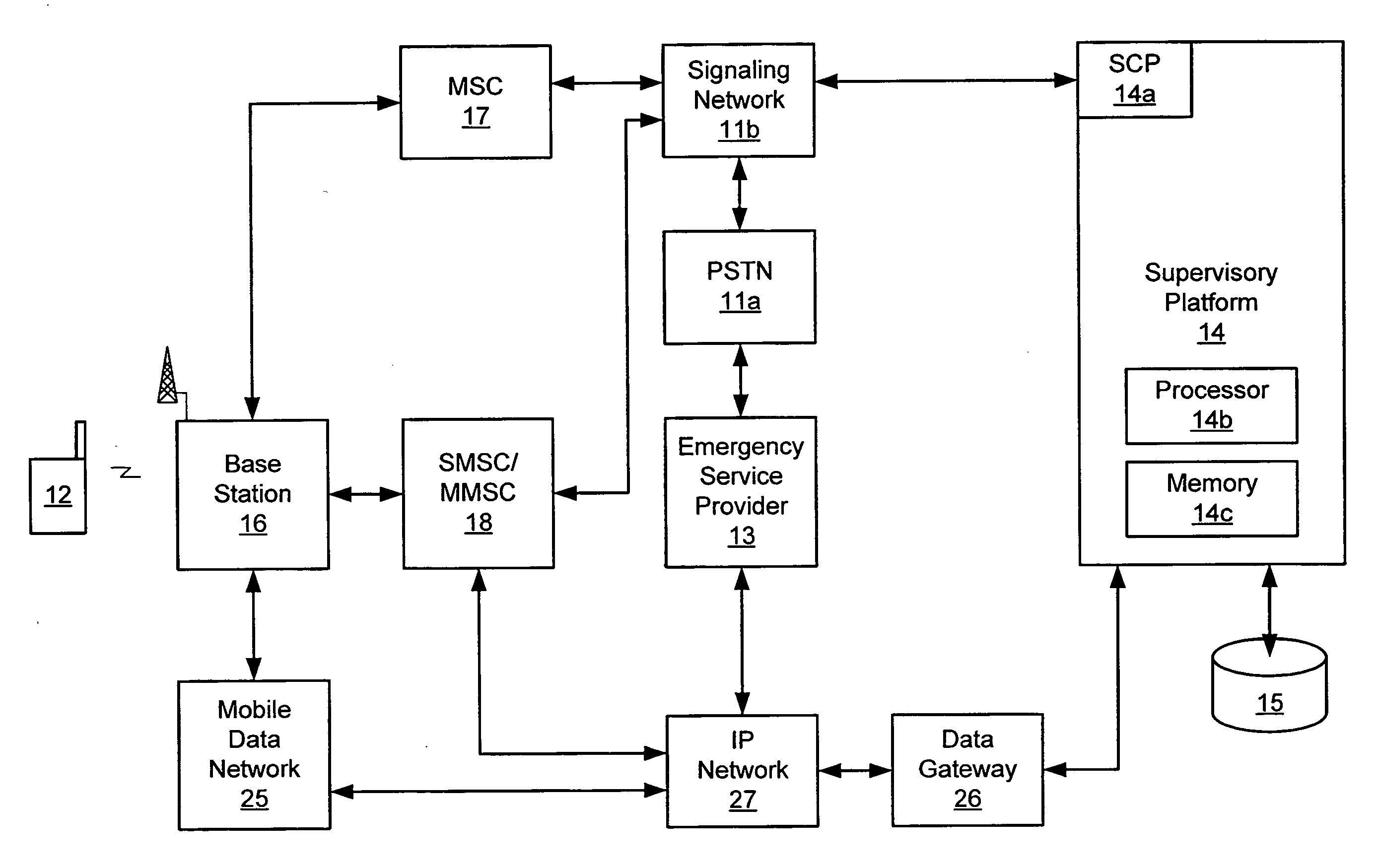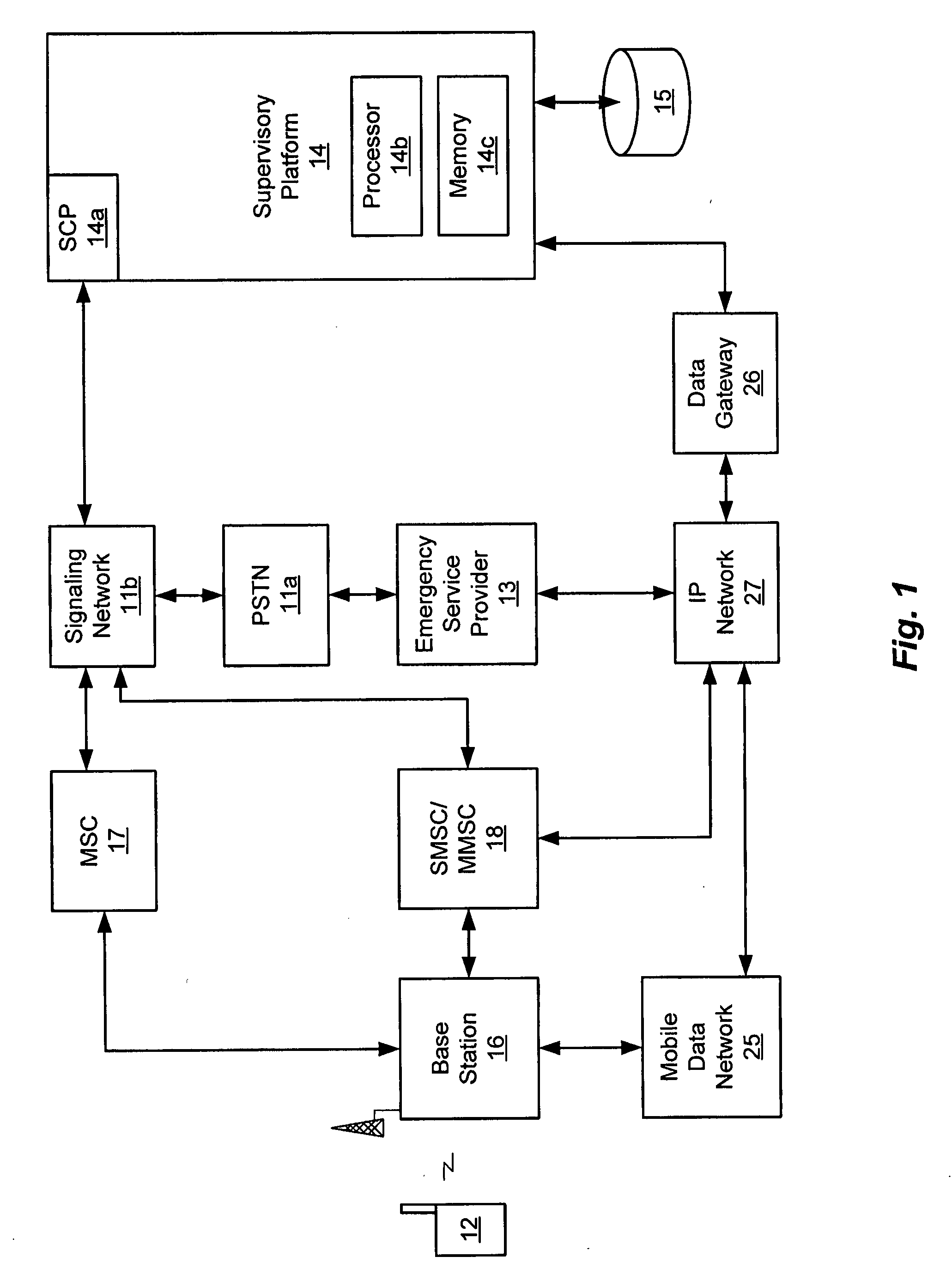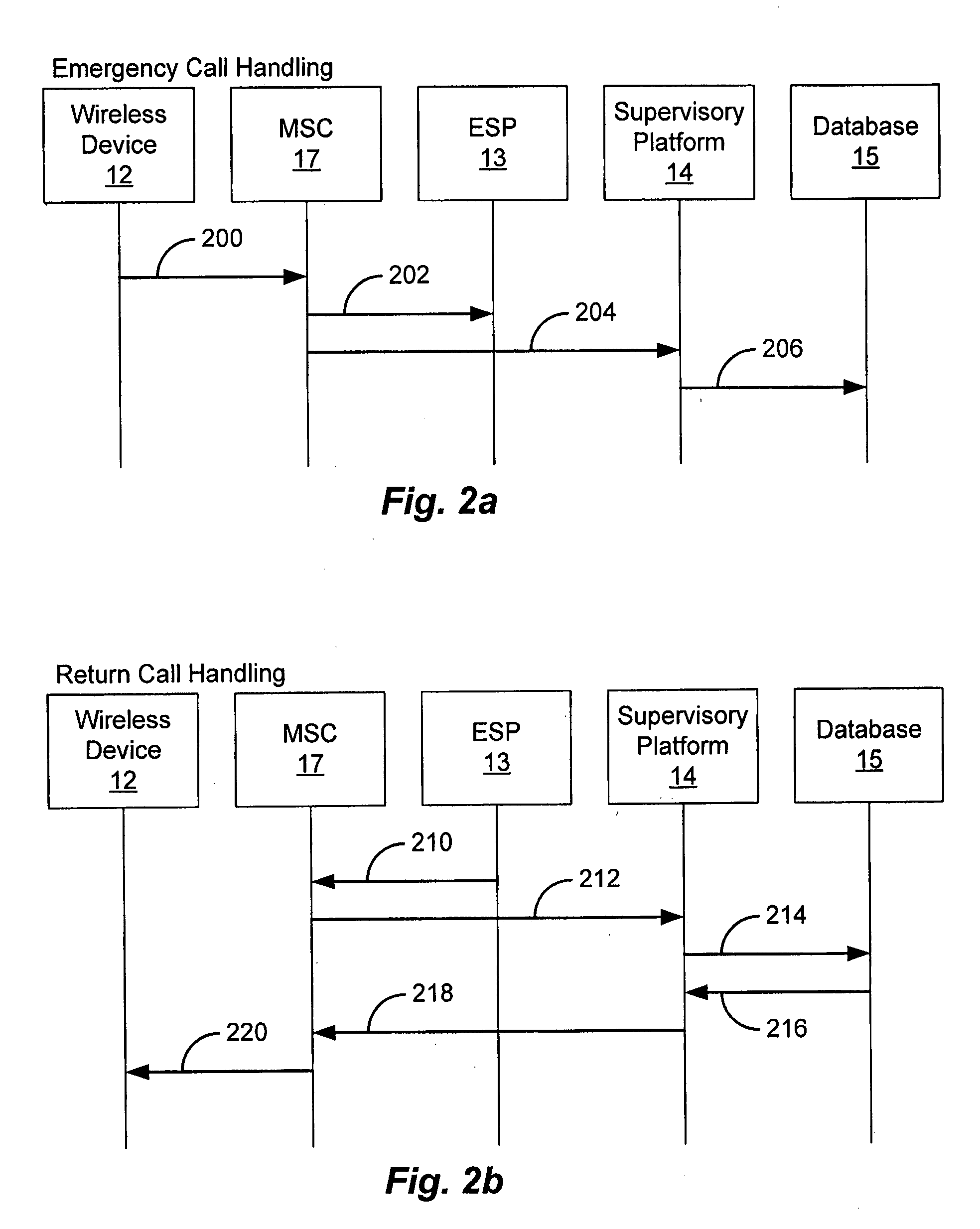Emergency service provision for a supervised wireless device
a wireless device and emergency service technology, applied in the field of managed communication system, can solve the problems of not being helpful, not being able to identify specific numbers, and blocking the subsequent callback from a 911 operator
- Summary
- Abstract
- Description
- Claims
- Application Information
AI Technical Summary
Benefits of technology
Problems solved by technology
Method used
Image
Examples
Embodiment Construction
[0025]This application claims benefit under 35 U.S.C. §119(e) of U.S. Provisional Application No. 60 / 836,825, filed Aug. 10, 2006, entitled EMERGENCY SERVICE PROVISION FOR A SUPERVISED WIRELESS DEVICE, the entire contents of which are hereby incorporated by reference herein.
[0026]FIG. 1 illustrates system connectivity and operations for a supervised wireless device 12 communicating with an emergency service provider ESP 13. Wireless device 12 is a supervised wireless device that has restrictions that may be imposed on the use of the device based on settings maintained in a supervisory platform 14. Supervisory platform 14 manages communications involving wireless device 12 based in part on a profile database 15. Profile database 15 includes information that indicates whether communications between wireless device 12 and another device should be permitted or blocked.
[0027]Information in profile database 15 may indicate, for example, that no incoming or outgoing communication with wire...
PUM
 Login to View More
Login to View More Abstract
Description
Claims
Application Information
 Login to View More
Login to View More - R&D
- Intellectual Property
- Life Sciences
- Materials
- Tech Scout
- Unparalleled Data Quality
- Higher Quality Content
- 60% Fewer Hallucinations
Browse by: Latest US Patents, China's latest patents, Technical Efficacy Thesaurus, Application Domain, Technology Topic, Popular Technical Reports.
© 2025 PatSnap. All rights reserved.Legal|Privacy policy|Modern Slavery Act Transparency Statement|Sitemap|About US| Contact US: help@patsnap.com



